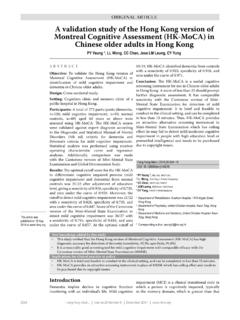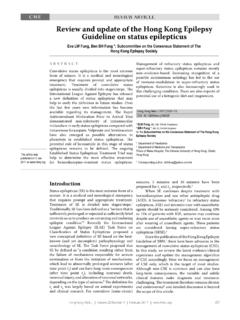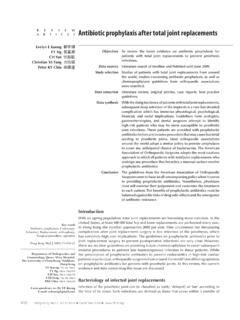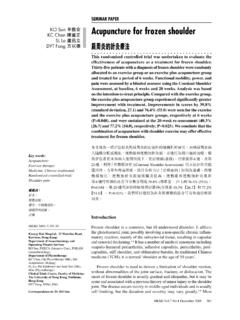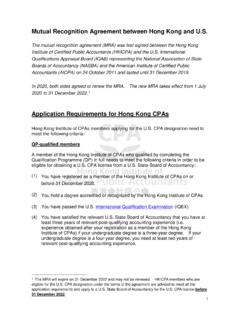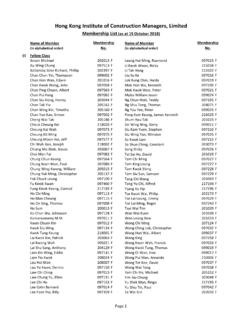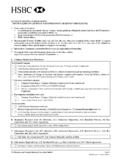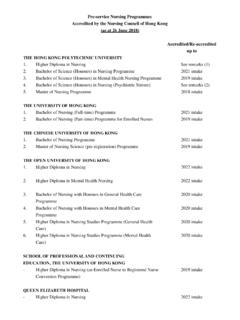Transcription of EDITOR-IN-CHIEF The hong Kong epilepsy guideline 2009
1 hong kong Med J Vol 15 No 5 # Supplement 5 # October 2009 1 EDITOR-IN-CHIEFR ichard Kay SENIOR EDITORSPT Cheung Albert KK Chui Michael G IrwinIgnatius TS Yu EDITORSKL Chan KS Chan Henry LY Chan Annie OO Chan CB Chow William B Goggins WK Hung Alvin KH Kwok Paul BS Lai Eddy KF Lam Stephen TS Lam WY Lam Nelson LS Lee Danny WH Lee Danny TN Leung WK Leung Janice YC Lo Herbert HF Loong James KH Luk Jacobus KF Ng Hextan YS Ngan Martin W Pak PC Tam SW Tang William YM Tang Clement CY Tham Peter CY Tong TW Wong Patrick CY Woo TK Yau SH Yeung Volume 15 # Number 5 # October 2009S U P P L E M E N T 5 The hong kong epilepsy guideline 2009 The hong kong epilepsy Society (HKES) 3 Editorial 4 The Guideline1.
2 Preamble 62. Diagnosis, review, and referral 63. Patient education 64. Following a first seizure 65. Investigations 86. Classification 97. Principles of management 98. Pharmacological or AED management 99. Management of drug-resistant epilepsy 1010. Side-effects of AEDs 1111. Presurgical evaluation of drug-resistant epilepsy 1112. Other forms of treatment 1213. Prolonged seizures in the community 1314. Treatment of status epilepticus 1315. Perioperative management of seizure 1416. Women with epilepsy 1417. Older people with epilepsy 1518. Children and young people with epilepsy 1519. Lifestyle and social issues 17 References 18 AppendicesAppendix A: Grading scheme of evidence 21 Appendix B: Differential diagnosis of epileptic seizures and epileptiform dischargesAppendix B1: Differential diagnosis of epilepsy in adults 22 Appendix B2: Differential diagnosis of epileptiform discharges 22 Appendix B3: Differential diagnosis of epilepsy in children 23 Appendix C: Classification of seizure type and epilepsy syndromeAppendix C1.
3 The ILAE classification of epileptic seizures 242 hong kong Med J Vol 15 No 5 # Supplement 5 # October 2009 INTERNATIONAL EDITORIAL ADVISORY BOARDS abaratnam Arulkumaran United KingdomRobert AtkinsAustraliaPeter CameronAustraliaJames DickinsonCanadaAdrian DixonUnited KingdomWillard Fee, JrUnited StatesRobert HoffmanUnited StatesSerena HuUnited StatesSean HughesUnited KingdomArthur KleinmanUnited StatesXiaoping LuoChinaJonathan SametUnited StatesRainer SchmelzeisenGermanyDavid WeatherallUnited KingdomHomer YangCanadaEXECUTIVE EDITORSM argaret H ChengCyrus R KumanaMANAGING EDITORY vonne Kwok ASSISTANT MANAGING EDITORSW arren Chan Betty Lau Appendix C2: The ILAE classification of epilepsies and epilepsy syndromes 25 Appendix D: Pharmacological treatmentAppendix D1: Suggested choice of AEDs by seizure types in adolescents and 26adults (modified from NICE)Appendix D2: Suggested choice of AEDs by epilepsy syndromes 26 Appendix D3: Position statement of HKES on generic AED substitution 27 Appendix D4: Side-effects of AEDs 27 Appendix E: Examples of factors to consider in selecting an AED 28in newly diagnosed epilepsyDeclarationThe authors received an educational grant from the hong kong epilepsy Society in suppor t of their research for and preparation of this guideline .
4 They did not receive payments or other benefits, or a commitment or agreement to provide such benefits from a commercial of abbreviationsAED antiepileptic drugCNS central nervous systemCT computed tomographyECG electrocardiogramEEG electroencephalogram / electroencephalographyHKES hong kong epilepsy SocietyICU Intensive Care UnitILAE International League Against EpilepsyIM intramuscularIV intravenousMEG magnetencephalogramMRI magnetic resonance imagingPET positron emission tomographySPECT single photon emission computed tomography# Percentage body fat in Chinese children # hong kong Med J Vol 15 No 5 # Supplement 5 # October 2009 The hong kong
5 epilepsy SocietyThe guideline Development GroupChairmanFONG Ka Yeung, Jason, MBBS, FRCP (Lond, Edin), FHKAM (Medicine), Specialist in NeurologyVice ChairmanKWAN Kwok Leung, Patrick, MBBChir (Camb), PhD, FRCP (Lond), FHKAM (Medicine), Specialist in NeurologyMembersCHAK Wai Kwong, MBBS, FHKAM (Paediatrics), Specialist in PaediatricsFONG Chung Yan, Gardian, MBBS, MD, PhD, FRCP (Glasg), FHKAM (Medicine), Specialist in NeurologyFONG Dawson, MBBS, FRCS (Edin), FHKAM (Surgery), Specialist in NeurosurgeryFUNG Cheuk Wing, MBBS, FHKAM (Paediatrics), Specialist in PaediatricsHUI Che Fai, Andrew, MBBS, FRCP (Edin), FHKAM (Medicine), Specialist in NeurologyLEUNG Howan, MBBS, FHKAM (Medicine), Specialist in NeurologyLUI Hui Tung, MBBS, FHKAM (Medicine), Specialist in NeurologyWONG Virginia, MBBS, FRCP (Lond, Edin), FRCPCH, DCH, FHKAM (Paediatrics), Specialist in PaediatricsYAM Kwong Yui, MBBS, FRCS (Edin), FHKAM (Surgery), Specialist in NeurosurgeryYEUNG Hon Ming, Jonas, MBBS, FRCP (Lond, Edin, Glasg), FHKAM (Medicine), Specialist in NeurologyYUNG Wing Yan, Ada, MBBS, FHKAM (Paediatrics), Specialist in PaediatricsZHU Xia Lun, LMCHK, FRCS (Edin), FHKAM (Surgery)
6 , Specialist in NeurosurgeryExternal ReviewerProf Josemir W SANDER, MD, PhD, FRCPUCL Institute of Neurology, University Department of Clinical and Experimental epilepsy , Queen Square, London, United Kingdom hong kong Med J Vol 15 No 5 # Supplement 5 # October 2009Th e Ho n g Ko n g E p i l e p s y G u i d e l i n e 2 0 0 9E D I T O R I A LIntroduction to hong kong epilepsy Society (HKES)The HKES is a non profit-making organisation established in November 2002. It aims at maintaining effective cooperation of all persons active in the field of medical sciences, public health, and social care, who are concerned with problems related to epilepsy . Every year various congresses, symposia, workshops or meetings are held to promote dissemination of scientific knowledge on epilepsy .
7 The executive council mainly consists of medical professionals with adult and child neurologists, neurosurgeons, neuroradiologists, and neuopsychologists. The Society has published a booklet Your Guide of epilepsy which covers essential information regarding epilepsy and enjoys popularity among people with management of epilepsyIn the past two decades we have witnessed a huge explosion in literature on epilepsy , followed by introduction of many more AEDs and innovative surgical techniques in controlling intractable seizures. Modern management of epilepsy requires sound knowledge on seizure differential diagnosis and neuropharmacology, proper classification of epilepsy , prompt referral for epilepsy surgery in drug-resistant epilepsy , as well as providing counselling and information at appropriate Special population groups comprising children, elderly, and women require careful considerations on certain issues, eg learning and behaviour in children, pregnancy and AED teratogenicity in reproductive women, drug interactions with polypharmacy and co-morbidities in the elderly.
8 An appraisal of the medical literature and translating evidence into practice guideline appears timely. epilepsy care in hong KongThe standard of epilepsy care in hong kong is heterogeneous and people with epilepsy are often managed by general practitioners, physicians, paediatricians, geriatricians, psychiatrists, neurosurgeons, neurologists, developmental paediatricians, child neurologists, or child psychiatrists. While quality care is often deficient in the primary sector, the specialist clinics are overloaded with people with stable epilepsy . People with drug-resistant epilepsy also lack referral channels. These problems may be attributed to the absence of a tertiary epilepsy centre, which accounts for underdevelopment of epilepsy surgery and paucity in structured teaching programmes.
9 It is envisaged that the future establishment of the Neurosicence Institute in hong kong would resolve these issues. During this interim period, an evidence-based and up-to-date epilepsy guideline would be useful in setting the standard of medical guidelinesGuidelines can be defined as systematically developed statements to assist practitioner decisions about appropriate health care for specific clinical circumstances. Professional societies and scientific bodies have published various guidelines and topical reviews on epilepsy , such as the NICE ( ) and SIGN ( ) guidelines from the UK and Scotland respectively, practice parameters by American Academy of Neurology ( ), and topical reviews by ILAE ( ).
10 Other regional guidelines are available from Malaysia, China, and Italy. As always, people are skeptical about guidelines. Criticisms include non evidence-based, potential for misuse during legal litigations, bias towards health economics with restriction of physician s autonomy, and irrelevant to clinical practice. On the other hand, formulation of a guideline does provide an essential link between clinical practice and advances in basic and clinical sciences. It helps us to identify gaps in evidence and areas of uncertainty, which in turn would generate further research. Modification of clinical practice would ensue following clinical auditing and medical education and after all the benefit will be translated into patient s interest.
